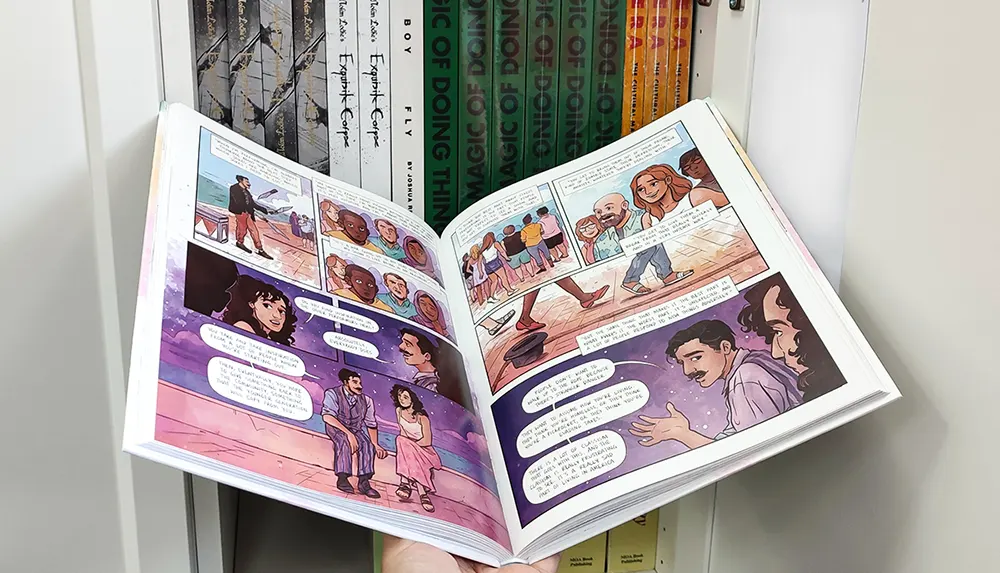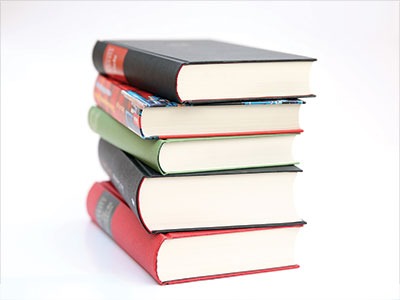Discover the World of Exclusive Hardcover Books
Discover the World of Exclusive Hardcover Books
Blog Article
A Comprehensive Overview to the Process of Hardcover Books Printing
When you begin the journey of hardbound publication printing, recognizing the whole process is crucial. As you browse via binding and high quality control, you'll locate that every choice influences the publication's overall appeal.
Understanding the Hardbound Book Structure
When you explore the globe of hardcover books, you'll rapidly see that their framework is deliberate and distinctive. The outer housing, typically made of tough cardboard, offers resilience and security. You'll discover a textile or leather treatment, which not only boosts aesthetics yet likewise contributes to guide's longevity. Inside, the endpapers link the cover to the message block, making sure a smooth interchange.
The text block itself contains several signatures, or folded sheets, sewn together for strength. You'll see that the spinal column is enhanced, enabling a smooth lay-flat reading experience - hardcover books. Furthermore, guide's weight commonly shares a sense of quality and permanence
Hardbound publications generally include a dust coat, which offers as a marketing tool while safeguarding the cover. Comprehending these elements assists you appreciate the craftsmanship behind hardbound books and their special appeal in the literary world.
Manuscript Preparation and Modifying
Getting your manuscript all set for printing is essential, and it starts with proper formatting guidelines. You'll need to comprehend the modifying procedure to fine-tune your job and ensure it resonates with visitors. Plus, understanding checking strategies can aid you capture those troublesome mistakes prior to your book mosts likely to publish.

Manuscript Formatting Standards
Correct manuscript format is necessary for developing a professional-looking hardcover book. Make sure to proofread your manuscript for uniformity in design, making certain that every little thing from punctuation to spacing sticks to your picked standards. Adhering to these actions will certainly establish a strong foundation for your publication.
Modifying Refine Fundamentals
Modifying your manuscript is an essential step that can transform it from a harsh draft right into a sleek last item. Beginning by going through your work seriously, concentrating on quality, framework, and circulation. Seek inconsistencies in your story, personality development, or argumentation. It's practical to take breaks between rounds of modifying to acquire fresh perspectives. Don't wait to reduce unnecessary content or rephrase awkward sentences; this will enhance readability. Think about seeking comments from trusted peers or professional editors that can offer valuable understandings. Keep in mind, editing isn't nearly dealing with mistakes; it has to do with refining your voice and guaranteeing your message resonates with viewers. Embrace the process, and you'll see your manuscript luster.
Proofreading Strategies Introduction
As soon as you have actually polished your manuscript with editing and enhancing, the next step is to assure it's totally free of mistakes that might sidetrack viewers. Review your manuscript out loud-- this aids you listen to unpleasant wording and place typos. Think about publishing your manuscript; reading on paper can expose mistakes that screens miss.
Designing the Publication Cover and Inside
When you're designing your book cover and inside, you'll wish to concentrate on important design elements that capture your audience's attention. Choosing the right typography styles and carefully selecting shades and images can make all the distinction in sharing your publication's motif. Let's check out exactly how these choices can boost your job and bring in visitors.
Necessary Style Elements
Creating an attractive publication cover and a properly designed interior is crucial for drawing in readers and boosting their experience. Select colors and images that mirror your book's motif and mood.
For the inside, emphasis on layout and white area. A clean, well organized style aids readers browse effortlessly. Take into consideration utilizing phase headings and subheadings to direct them via the material. Aesthetic components, like images or graphics, can likewise enhance interaction but must complement the message, not overwhelm it. Keep in mind, a natural design throughout your publication cultivates a professional appearance that can greatly affect a reader's choice to select it up.
Picking Typography Styles
Typography plays a vital role in both guide cover and interior layout, shaping how viewers view your content. When choosing typography styles, consider your publication's style and target market. A classic serif font may work well for literary fiction, while a modern-day sans-serif could suit a modern story. Guarantee readability; your text ought to be simple on the eyes, specifically for longer flows. Take note of font size and line spacing, as these elements affect general circulation. Blending fonts can include interest, but limit it to two or 3 to maintain coherence. Think about hierarchy-- utilize my sources different styles for headings and body message to lead viewers easily through your work. Your typography choices will significantly impact the reader's experience.
Color and Images Choice
Choosing the right shades and images is important for capturing viewers' interest and conveying your publication's styles. Start by considering your category; dynamic colors could work for a children's publication, while soft tones suit a secret book. hardcover books. Usage imagery that reverberates with your material-- photos, pictures, or abstract designs can boost your message
When developing the cover, make particular the imagery does not bewilder the title and author's name; clearness is key. This cohesive approach not just boosts your book's visual yet additionally enriches the viewers's experience, making it a lot more memorable.
Choosing the Right Paper and Materials
When choosing paper and materials for your hardbound publication, it's essential to consider just how they'll affect the general look of your task. Begin by picking the best paper weight; heavier supply often shares high quality and longevity, while lighter paper can create an extra delicate touch. Consider the coating as well; glossy paper improves pictures and shades, while matte can give a sophisticated, understated appearance.
Do not ignore the cover products. Towel, natural leather, or printed paper can set the tone for your publication. Choose for acid-free paper to protect against yellowing over time if your project consists of pictures. In addition, think of the binding products; utilizing high-quality adhesive warranties your publication lasts.
Ultimately, the options you make right here mirror your vision, so put in my sources the time to sample various products (hardcover books). Your options will help develop a book that's not just visually attractive but practical and also long lasting
The Printing Refine: Methods and Technologies
A selection of printing methods and modern technologies can bring your hardcover publication to life, each offering distinct benefits. Digital printing is a preferred option for brief runs, enabling for fast turnaround and economical options.
For unique impacts, you might consider methods like foil marking or embossing, which can include an elegant touch to your cover. Furthermore, you can go with numerous inks, including environmentally friendly options that accommodate eco conscious viewers. Comprehending these methods aids you make notified choices, ensuring your hardbound publication not just looks excellent but additionally fulfills your manufacturing requires effectively. Pick the ideal approach to elevate your book's allure and influence.
Binding Techniques for Hardcover Books
A number of binding techniques can transform your hardcover publication into a resilient and eye-catching product. One preferred choice holds true binding technique, where the pages are sewn together and after that affixed to a rigid cover. This supplies superb sturdiness and a professional appearance. An additional approach is the perfect binding, which utilizes glue to hold the pages together, permitting for a sleek spine but less durability compared to instance binding.
You might also think about spiral binding, which allows your book to lay flat, making it excellent for manuals or workbooks. Each binding method has its advantages and fits various requirements, so assume about your book's purpose and audience when choosing the finest alternative for your job.
Quality Assurance and Last Touches
After picking the right binding approach for your hardbound publication, top quality control becomes necessary to validate your last item fulfills your assumptions. Begin by checking the printed pages for any type of errors or variances in color and design. You don't wish to miss out on any kind of typos or misprints that might impact your visitors' experience.
Next, check the binding integrity. Validate the web pages are safely attached and that the back is tough. A well-bound publication not just looks expert but also really feels sturdy in your hands.
Furthermore, take notice of the cover. Search for any scuff marks or misalignments in the art work. Make sure they're used continually across all copies. if you've decided for special finishes like embossing or aluminum foil stamping.
Ultimately, carry out a detailed assessment of the entire batch prior to transferring Clicking Here to circulation. By doing this, you can validate that every book mirrors your high requirements.
Regularly Asked Inquiries
The length of time Does the Hardcover Publication Printing Process Commonly Take?

What Is the Minimum Order Quantity for Hardcover Books?
The minimum order amount for hardbound publications typically starts around 100 copies, but it can differ based upon the printer. You must get in touch with your selected printing service for their specific needs and prices.

Can I Print Hardbound Books in Personalized Sizes?
Yes, you can print hardcover publications in custom sizes. Numerous printing services provide versatility with measurements, permitting you to pick a layout that matches your task. Simply verify the requirements prior to positioning your order.
Exist Eco-Friendly Options for Hardbound Publication Printing?
Yes, you can locate eco-friendly options for hardcover book printing. Many business make use of recycled materials and lasting inks. Simply ask your printer about their eco-friendly practices to guarantee your job lines up with your environmental values.
What Are the Costs Associated With Hardbound Publication Printing?
When considering hardbound book printing costs, you'll require to aspect in products, design, and printing methods. Added expenses like delivery and binding can additionally affect your overall budget plan, so plan appropriately for your project.
When you commence the journey of hardbound publication printing, comprehending the whole procedure is essential.A selection of printing strategies and innovations can bring your hardcover book to life, each offering one-of-a-kind benefits. Just how Lengthy Does the Hardbound Book Printing Refine Usually Take?
The hardbound book printing procedure generally takes around 2 to 6 weeks.Yes, you can discover environment-friendly choices for hardcover publication printing.
Report this page